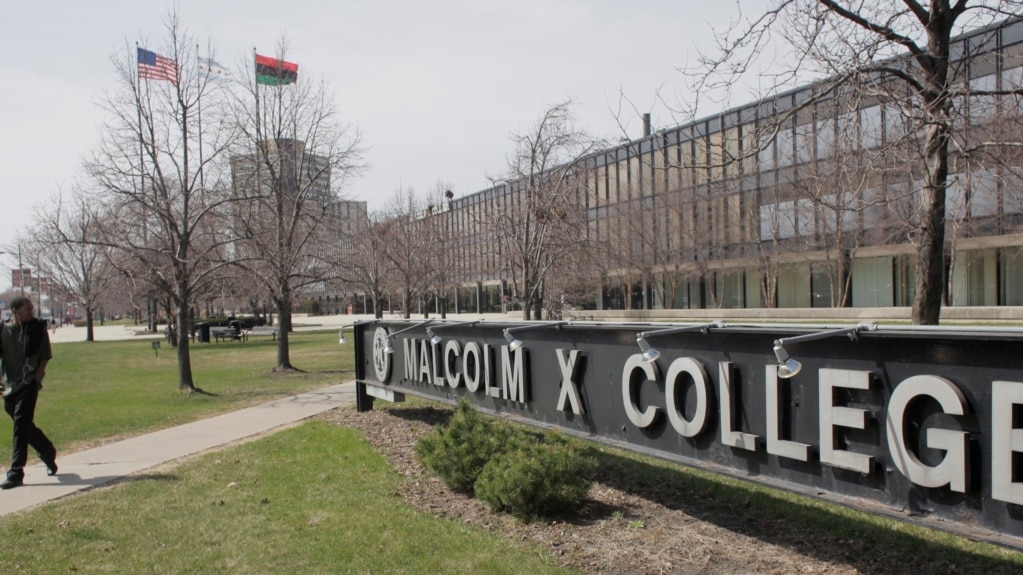Donje Gates is 18 years old and lives in Chicago, Illinois. His family wants him to go to college in the fall. But Gates is thinking about going to a trade school instead. He says he worries about the cost of college and is not sure if it will be valuable to him.
Gates was in a group of high school students visiting Chicago’s Malcom X Community College. About 75 percent of the school’s students are women. Like many colleges and universities in the United States, Malcom X is struggling to get more male students to enroll.
Women now make up about 58 percent of U.S. college undergraduates. That information comes from the National Student Clearinghouse Research Center. The percentage of men in higher education is getting smaller each year.
Now, some universities are making extra efforts to attract and keep male students.
For example, leaders at Malcolm X Community College saw that Black men were dropping out at a higher rate than other student groups. To help more Black men stay in school, leaders started a mentoring program. The program connects a teacher or other school employee with two Black male students.
The effort has helped. Forty-three percent of Black male students dropped out between the fall of 2021 and the spring of 2022. But 93 percent of the men in the mentoring program stayed in school, said the school’s president, David Sanders.
However, Sanders said some men do not want to admit they need academic help.
“There’s an expectation for a male,” he said. “He’s supposed to be strong and not show weakness.”
Ideas about men can affect enrollment
College officials say some ideas about men and boys add to the enrollment difficulties.
Berea College is a small private school in the southern U.S. state of Kentucky. It has 18 percent fewer male students now than in 2019. The college is trying to attract more men from nearby areas in the Appalachian Mountains.
Rick Childers is a former student at Berea. He now works for the college and leads the school’s Appalachian project. He said many of the male students he meets face the same outdated ideas about masculinity that he did. In that old way of thinking, going to college was not something a strong man would do.
Childers said his father would call him “college boy” in a negative way.
Educators say it is difficult to make college appealing to men who have been told that college is not for them.
Educators say another problem is that some officials at colleges and universities do not believe male students need any special help.
Ioakim Boutakidis is a professor of child and adolescent studies at California State University Fullerton. He noted that some officials think men already have more advantages than women. As a result, those schools may be less likely to offer special support for male students.
Boutakidis said he has tried to get his university to pay attention to male enrollment and academics. But his coworkers, he said, have expressed doubt about the need for more focus on male students.
Overall, men of color are less likely to attend college than white men. Because of this, Boutakidis said he thinks schools should focus on men of color first.
Some colleges across the country have started to do that. California’s large community college system has increased support of its African American Male Education Network and Development program, or A2MEND. The program aims to attract and keep Black men.
One way it does this is by giving one-on-one mentoring and providing places for the students to meet. The program hopes this will make Black students feel welcome and build a sense of community.
Amanuel Gebru is vice president of student support at Moorpark, a California community college. He is also president of the A2MEND board. He said he thinks colleges should hire more Black professors.
Just seven percent of faculty members at American colleges are Black, according to the National Center for Education Statistics. Moorpark College said just two percent of its faculty members are Black. The U.S. population is 13.6 percent Black.
In New Jersey, Montclair State University has tried several ways to attract male students from communities in that state. This includes providing tutoring, counseling, food and other things students need.
But many communities still believe men do not belong in college, said assistant provost Daniel Jean.
“There’s an anti-intellectual environment that’s gotten worse,” he said. “The definition of manhood is often flawed.”
Vaughn Smith Jr. is a 23-year-old Montclair State student from Newark, New Jersey. Smith, who is Black, said boys and men in poorer neighborhoods may be focused on things other than making college plans.
He said most of his male high school classmates did go to college. But many of them, he added, have since dropped out.
I'm Andrew Smith. And I'm Faith Pirlo.

